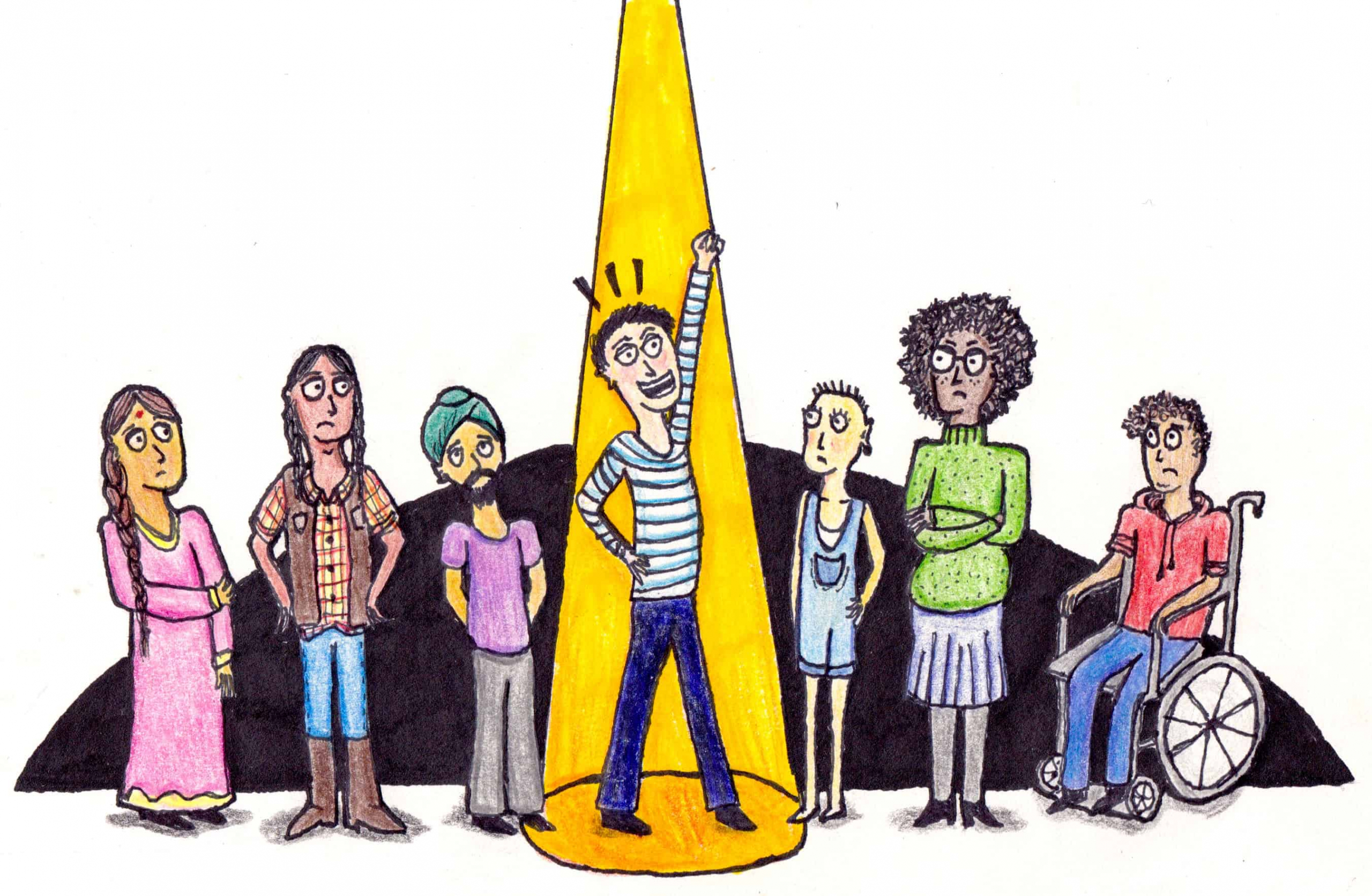[dropcap]S[/dropcap]ocially-conscious Twitter users joined digital strategist William Yu in his online crusade for Asian-American representation in Hollywood. The 25-year-old combined the hashtag #StarringJohnCho with Photoshopped images of the Star Trek actor as the lead in several big budget films, such as The Martian and Spectre.
Shortly afterwards, the hashtag #StarringConstanceWu became popularized, as similar images rose up featuring the Fresh Off the Boat actress as the protagonist in films that had originally cast white female leads.
Critics, artists, and fans alike have commented for years on the inequality of representation in Hollywood. Shows like Friends set all-white casts in diverse cities like New York and have the characters engage with other white characters, practically erasing the existence of people of colour (POC) in these proposed universes.
[pullquote] Time and again, stories that rely on the characters textually being of one race or another are put through the Hollywood assembly line and standardized — that is to say, flour-dusted and dyed blonde. [/pullquote]
In other cases, Hollywood bestows the roles of the dutifully sassy, sexy, brainy, or funny friend of the protagonist onto the black, Hispanic, Asian, and Indian acting communities. These characters serve as static stereotypes of their race, acting as the backboard of the multidimensional white protagonist jokes, values, and intricacies.
Recently, Hollywood’s lens has seemed to turn towards telling stories about POC, without allowing those people to take up space in their own narratives. The examples run from Emma Stone’s portrayal of a Hawaiian and Asian woman in Aloha to casting decisions made in films like Gods of Egypt and The Last Airbender.
Time and again, stories that rely on the characters textually being of one race or another are put through the Hollywood assembly line and standardized — that is to say, flour-dusted and dyed blonde. Rightfully incensed, many supporters of the Asian-American community took to Twitter to support the notion of casting Asian actors more frequently as leads in films.
The rage does not come, as some suggest, from a desire to have everything for everyone and everything all at once. It’s the commonplace annoyance one might feel when a colleague who may or may not work as hard as you is constantly handed the best projects, the most lucrative deals, and the most rewarding opportunities.
To work in Hollywood and be denied the ability to tell compelling, diverse, and interesting stories is a self-inflicted wound in the entertainment industry. As times and people change, certain tropes and standards will have to be pushed aside to make way for the sheer creative genius that lies ahead — which, in many cases, lies in the heads and hearts of POC.
Even so, Hollywood thrives off of romanticizing the past and rejecting change. The advancements made in technology, however, have made this impossible to uphold. Audiences that watch Hollywood films, television shows, and music videos engage with art in ways inconceivable to the world that existed a mere ten years ago.
[pullquote]The narrow frame that Hollywood insists on fitting to every work they produce ostracizes those who do not fit the mould and weakens the foundation on which Hollywood is built.[/pullquote]
In 2016, audiences can stream their favourite shows on Netflix while they tweet a Drake meme directly to their favourite athlete. The audience now wields more power than they had previously, and this power can be used to not only address the lack of representation in Hollywood, but to hold that previously unimpeachable body accountable too.
Art should ideally reflect the world and the people in it. Art does not have to be beautiful, elegant, or reminiscent of some past glory in order for it to be meaningful. The narrow frame that Hollywood insists on fitting to every work they produce ostracizes those who do not fit the mold and weakens the foundation on which Hollywood is built.
When people do not see themselves in the images projected on movie theatre screens, they are driven to create. Be it through hashtags, memes, fanfictions, or even their own scripts, audience members wield their own creativity when they are shunned from artistic content that is available.
There is no longer such a thing as an idle audience member; an idea and an internet connection can signal a virtual battalion of like-minded individuals. So, Hollywood had better make room at the dinner table for those they’ve rejected — before the tables turn.
Jenisse Minott is a second-year UTM student studying Communication, Culture, Information, and Technology.


